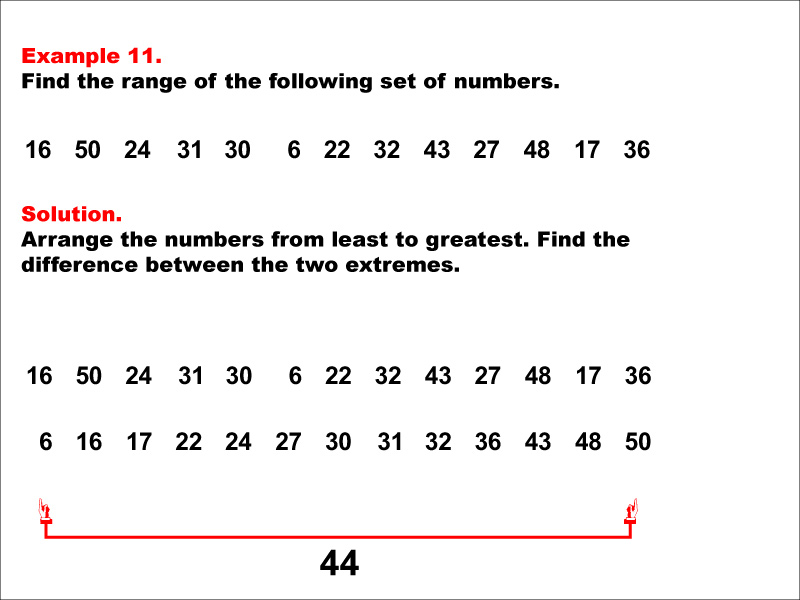
Display Title
Math Example--Measures of Central Tendency--Range: Example 11
Display Title
Math Example--Measures of Central Tendency--Range: Example 11

Topic
Measures of Central Tendency
Description
This example demonstrates how to find the range of the following set of numbers: 16, 50, 24, 31, 30, 6, 22, 32, 43, 27, 48, 17, 36. The solution involves arranging the numbers from least to greatest and finding the difference between the two extremes. The range is calculated to be 44. This example is valuable for understanding the concept of range, as it teaches students how to identify the maximum and minimum from a larger set of numbers and find their difference.
In the context of measures of central tendency, examples like this help students develop a deeper understanding of data analysis. The range provides insight into the spread of data, complementing other measures such as mean, median, and mode. By working through multiple examples with varying datasets, students can better grasp how these measures work together to provide a complete picture of data distribution.
Teacher's Script: Let's examine this example closely. We'll start by organizing our numbers from smallest to largest. Then, we'll identify the minimum and maximum values to calculate the range. This process will help us understand how the range represents the spread of our data and why it's an important measure in statistics.
For a complete collection of math examples related to Measures of Central Tendency click on this link: Math Examples: Measures of Central Tendency: Range Collection.
| Common Core Standards | CCSS.MATH.CONTENT.6.SP.B.4, CCSS.MATH.CONTENT.7.SP.B.4, CCSS.MATH.CONTENT.6.SP.B.5.C |
|---|---|
| Grade Range | 6 - 8 |
| Curriculum Nodes |
Algebra • Probability and Data Analysis • Data Analysis |
| Copyright Year | 2014 |
| Keywords | data analysis, tutorials, measures of central tendency, range |